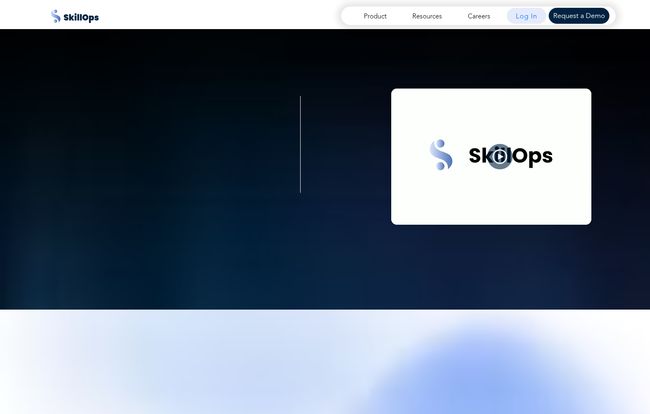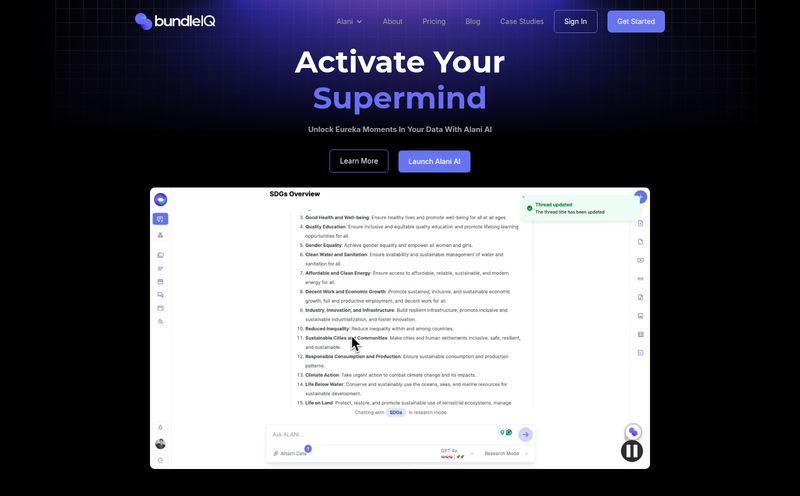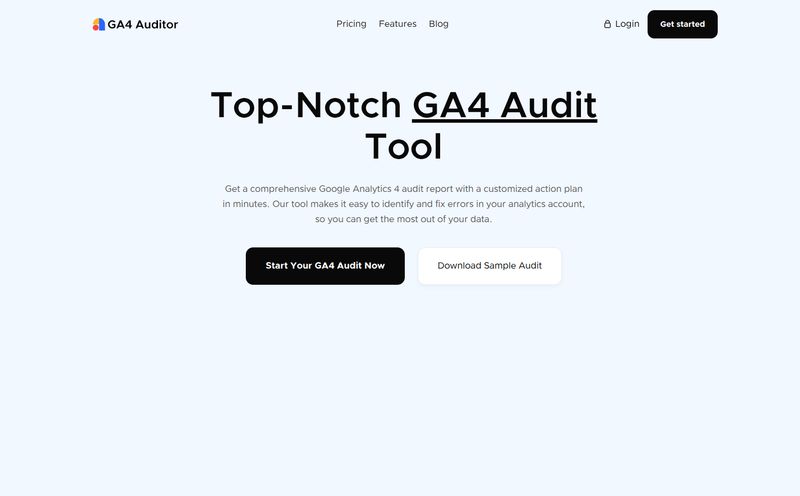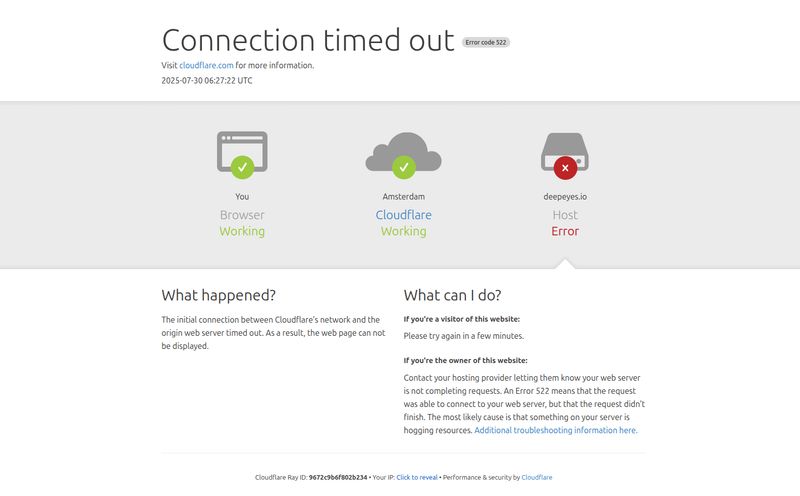For years, I’ve seen companies—big, small, tech-savvy, and, well, not-so-savvy—struggle with the same gnawing problem. It's the ghost in the machine of every project manager and operations lead. The big question:
Who on my team can actually do this, and are they available?
We've all been there. You’re staring at a new project brief, and your first step is to dive into a monstrous Excel spreadsheet. It’s got a million tabs, colors that clash violently, and the last update was three months ago by someone who left the company last week. You spend hours, maybe days, trying to piece together a team, feeling more like an archaeologist than a manager. It’s a mess. A total, soul-crushing mess.
So when a tool like SkillOps.ai pops up on my radar, claiming to use AI to solve this exact problem, my interest is piqued. But I'm also skeptical. We’ve been promised a lot by AI. Can it really fix the very human chaos of resource planning?
So, What Exactly is SkillOps.ai?
At its core, SkillOps.ai is an AI-powered SaaS platform built to bring clarity to the chaos. Think of it less as another piece of software and more as a central nervous system for your organization's talent. It’s designed to give you a real-time, bird's-eye view of all the skills your employees have. Not just their job titles, but their actual, granular abilities. Python, public speaking, Figma, specific welding techniques, you name it.
It’s like being a symphony conductor who, instead of just seeing a 'violin section', can see that one violinist is a master of baroque trills while another excels at modern, atonal pieces. Suddenly, you can compose much more interesting music. That’s the promise here: moving from blunt-force resource allocation to a more elegant, skill-driven strategy.
The Core Features That Actually Matter
A platform's website can throw a lot of buzzwords at you. I prefer to cut through the noise and see what a tool actually does. From what I've gathered, SkillOps.ai hangs its hat on a few key functions that work together to create a cohesive system.
Centralized Skill Management and The Skill Matrix
This is the foundation. Instead of skills being listed on individual resumes or lost in a manager's memory, they're all logged and categorized in one place. The Skill Matrix isn’t just a static grid; it’s a living document. It shows you who has what skills, at what proficiency level, across the entire company. In my experience, this alone is huge. It stops you from re-hiring for a skill you already have hidden in another department.
Intelligent Capacity and Resource Planning
Okay, so you know who can do what. Now what? This is where the planning tools come in. SkillOps.ai helps you look at your project pipeline and map the right people to the right tasks based on their skills and their availability. This shifts planning from being a reactive fire-drill to a proactive, strategic exercise. You can see potential bottlenecks weeks or months in advance. A real game-changer.
Real-Time Skill Gap Analysis
This might be my favorite part. The platform doesn't just show you the skills you have; it highlights the ones you're missing. If you have a bunch of AI projects coming up but are light on machine learning experts, the system flags it. This is gold for HR and L&D (Learning and Development) teams. Instead of guessing what to train people on, you have a data-backed roadmap for upskilling and professional development. You're not just filling seats; you're building the workforce you'll need tomorrow.

Visit SkillOps.ai
Why This Could Be a Big Deal for Your Operations
Look, improving operational efficiency is one of those phrases that gets thrown around so much it almost loses its meaning. But here, the path is pretty clear. When you can staff projects faster and with the right people, you save an incredible amount of time and money. Projects are less likely to stall, and you get more out of the talent you're already paying for. It's about maximizing your most expensive asset: your people.
The data-driven aspect can’t be overstated. Making decisions based on real-time data versus a gut feeling is the difference between a thriving business and one that’s always just trying to keep up. This tool seems to provide the dashboard for those critical decisions.
Let's Be Real: The Potential Hurdles
No tool is perfect, and I’m not here to sell you a fantasy. There are always trade-offs, and it's important to go in with your eyes open. Based on the site and my experience with similar platforms, there are a couple of things to be aware of.
The Elusive Pricing Page
I did what any good reviewer does: I went hunting for the price. And... I hit a 404 error. A classic. While a bit funny, the lack of a public pricing page is very telling. This isn't a knock, just an observation. It usually means one thing: this is an enterprise-level tool. Pricing is likely customized based on company size, features needed, and the level of support required. Don't expect a simple $50/month plan. You'll need to book a demo and have a conversation. It's the "if you have to ask, you might not be the target customer" model, common in B2B SaaS.
The Initial Setup and Learning Curve
A platform this powerful doesn't just work by magic. You have to feed the beast. Getting your initial data in—employee skills, proficiencies, current projects—will take some effort. It's an investment. Furthermore, you can't just drop this on your team and expect them to adopt it overnight. There will be a learning curve for managers to fully use its features. This isn't a con, so much as a reality of implementing any meaningful system in a business.
Who is SkillOps.ai Really For?
So who should be booking that demo? Based on the features and the enterprise vibe, I'd say SkillOps.ai is aimed squarely at mid-to-large sized companies. Think consulting firms, software houses, engineering companies, or any organization with a complex matrix of projects and a diverse employee skill set. If your resource planning involves more than 50 people and multiple projects at once, you're likely feeling the pain this tool aims to solve. If you're a 10-person startup, your trusty spreadsheet (as much as I mock it) is probably fine for now.
A Quick Comparison with The Old Way
Sometimes seeing things side-by-side just clicks. Here's how I see SkillOps.ai stacking up against the old way of doing things.
| Feature | SkillOps.ai | The Dreaded Spreadsheet |
|---|---|---|
| Data Integrity | Real-time, centralized, and single-source-of-truth. | Static, often outdated, and scattered across multiple files. |
| Skill Gap Identification | Automatic, proactive, and data-driven. | A manual, soul-crushing treasure hunt. |
| Planning Style | Strategic and forward-looking. | Reactive and based on guesswork. |
| Manager's Sanity | Largely preserved. | Lost somewhere in VLOOKUP hell. |
My Final Verdict on SkillOps.ai
So, is SkillOps.ai the promised land for resource management? It certainly looks promising. It's tackling a very real, very expensive problem that has plagued businesses for decades. The move towards a centralized, AI-enhanced, and data-first approach to skill management is not just a trend; it's a competitive necessity.
It's not a silver bullet. It will require a financial investment and an investment of time to get it set up and adopted properly. But for the right company—one that's feeling the acute pain of inefficient staffing and hidden skill gaps—the return on that investment could be massive. It represents a fundamental shift from just managing people to truly understanding and deploying their capabilities. And in today's world, that might be the most valuable thing you can do.
Frequently Asked Questions about SkillOps.ai
- 1. What is SkillOps.ai in simple terms?
- It's a software platform that helps businesses track employee skills in one place. It uses AI to help managers build the best teams for projects, plan for future needs, and find skill gaps before they become a problem.
- 2. How much does SkillOps.ai cost?
- There's no public pricing available on their website, which is typical for enterprise software. You'll need to contact their sales team for a custom quote based on your company's size and needs.
- 3. Is SkillOps.ai difficult to set up?
- Like any powerful tool, it requires an initial setup phase to input your company's data (employee skills, roles, etc.). While there will be a learning curve, the long-term benefits of centralized data are designed to outweigh the initial effort.
- 4. What kind of businesses benefit most from SkillOps.ai?
- Mid-to-large sized businesses with complex project needs, such as consulting firms, tech companies, and engineering departments, are the ideal users. If you're managing dozens or hundreds of employees across multiple projects, this is for you.
- 5. How does it actually help with skill gap analysis?
- By comparing the skills required for your upcoming projects with the existing skills of your workforce, the platform automatically highlights what you're missing. This allows you to create targeted training programs or make strategic hires.
- 6. Is SkillOps.ai only for IT and tech companies?
- Not at all. While it’s a natural fit for tech, any project-based organization—from creative agencies to manufacturing and logistics—can benefit from better understanding and managing their team's skills.



